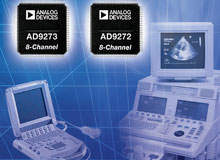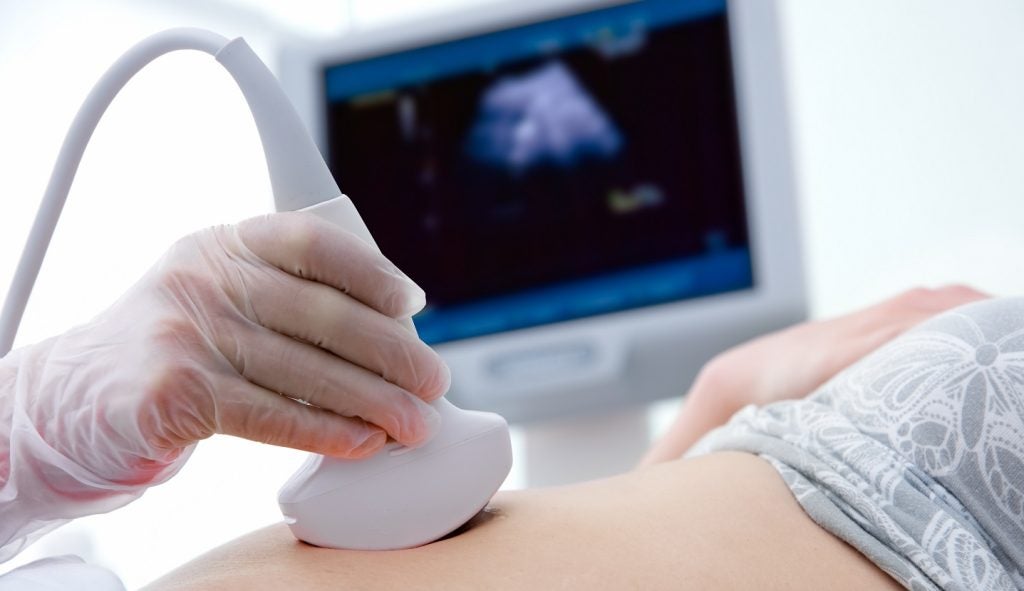
Hospitals, medical clinics and mobile emergency units are increasingly relying on high-performance and portable ultrasound equipment for routine, preventative and acute medical care. Ultrasound equipment designers are therefore being forced to meet new and varied demands for a better balance between image quality and power efficiency.
Now, it seems, ultrasound equipment that can give a clearer image from deeper in the body may be less than two years away thanks to two electronic integrated circuits launched by US chip firm Analog Devices (AD).
However, the company never expected it would be bringing such a product to market. While positive, the launch of these chips has required some hefty reshuffling of the company as well as a shift in overall principals.
The road from R&D
As with most technical innovations, the chips were not produced out of thin air and to get them to market, AD has had to undergo a change in commitment from the company. This started over a year ago in April 2007 when the company attacked the ultrasound market with a chip called the AD9271.
See Also:
This award-winning chip was a fully integrated processor for ultrasound, supporting eight data channels on a single piece of silicon.
How well do you really know your competitors?
Access the most comprehensive Company Profiles on the market, powered by GlobalData. Save hours of research. Gain competitive edge.

Thank you!
Your download email will arrive shortly
Not ready to buy yet? Download a free sample
We are confident about the unique quality of our Company Profiles. However, we want you to make the most beneficial decision for your business, so we offer a free sample that you can download by submitting the below form
By GlobalDataBefore that the norm was for just two channels. Given that a typical hospital ultrasound system would have been between 64 and 178 channels, a lot of chips were needed for each one. This situation was becoming harder as the demand for more channels increased, with top-end equipment needing 256 channels; there is even equipment in some research laboratories with 512 channels.
Overall, more channels means higher image resolution. Increasing the number of channels in the main components from two to eight immediately cuts fourfold the number needed in each piece of equipment or allows more channels for the same size.
Catering for success
The product was a hit with the equipment makers and the first scanners using this chip are now being prepared for launch. They are expected to receive approval within the next six months so should start arriving in hospitals early in 2009. Such has been its success that AD decided to restructure the way it was organised and earlier this year set up a vertical healthcare team to concentrate on this market. Until then, none of its engineers were fully focused on medical equipment, according to healthcare business development and applications engineer Jan-Hein Broeders.
“We had a team already working part-time on this job,” Broeders says. “We came together twice a year and discussed the needs and trends of the healthcare market. But in April and May this year we put together a group of people just focused on healthcare.”
AD had previously focused on consumer devices from amplifiers to clocks and power management tools. The company is made up of 15 people spread out around the world, from Europe and the Far East to the company’s base in the US. Medical sales accounted for only 5% of its $2.43bn revenue in 2007, but AD recognised the growing potential in the market and increased its interests in this field, knowing it could move beyond ultrasound to a range of other products from glucose monitors to implanted pacemakers.
Building for the market
Broeders says its two new ultrasound products originated from customer feedback on the AD9271.
“When we came to the market, some customers liked the part and designed it in and are now shipping,” he explains. “But others wanted more performance to improve the image processing. Some wanted lower noise so there was less interference. And some wanted lower power so they could address the portable market.”
The firm therefore decided to develop two products to satisfy these diverse requirements. First is the AD9272 which features what AD says is the industry’s lowest terminated noise figure, which can produce better image quality for cart-based ultrasound equipment. It has also introduced the AD9273 – a power-efficient chip that will increase battery life for portable ultrasound scanners.
To reduce the design cycle for equipment manufacturers AD was careful to keep the pinout on both devices almost the same as for the AD2971. This means that the new chips can be slotted into existing designs with only a little modification rather than having to start from scratch. It also means that manufacturers making both portable and cart-based systems can have the same basic printed circuit boards and just use whichever chip suits the application.
Quality and flexibility
The importance of the higher resolution can be seen from ultrasound equipment used for foetal monitoring. Higher resolution will not just allow the doctor to see the foetus and its position, but also look closer at its internal organs, such as its heart, and be able to measure the speed and direction of the blood flow. This is possible because of the lower noise figure on AD2972 – more than a third less than the AD2971.
But image quality is not even sacrificed on the lower power AD2973. In normal operation it consumes a third less power than its more powerful companion chip, but the user can choose to enhance image quality for short bursts. This could be useful, say, when a doctor is using a portable scanner and finds something that needs closer inspection. With the press of a button, the image quality can be improved for a short time, though obviously power consumption will increase for that period.
“This can all be done on the fly,” says Broeders. “You can push a button to increase image quality or switch to the lowest power mode.”
A field hospital could also increase battery life by powering down the scanner when it was not actually scanning. This can be while they are, for example, looking more closely at an image just taken before they made the next scan.
The flexibility of these chips also means that different types of probes can be used with the equipment. “We can get just about every type of probe to plug into our system,” says Broeders. “And they can be programmed to get the best out of each probe.”
AD will even provide a simulator to help the manufacturers of the scanners customise noise and power performance for each piece of equipment.
This also means that the scanners can be fine tuned for the parts of the body they will be used for from measuring the hardness of the liver to looking at soft tissue within the heart.
Ultrasound equipment using the AD2972 will achieve finer resolution, deeper penetration into the body and allow doctors to see tissue and measure blood flow.
The AD2973 will find use in portable equipment used in ambulances, field hospitals, clinics, rescue crews and doctors’ surgeries. It will enable bedside imaging and let medical crews get information about their patients quickly.
The chips will also increase the use of higher quality imaging equipment as more powerful systems will take up less room, letting local doctors’ surgeries carry out more ultrasound scans themselves rather than referring patients to hospitals or specialist clinics.
Because these products are based on the existing AD2971, the design cycle for new equipment should be shorter. “I think new designs with these chips will be quicker,” said Broeders. “We will see prototypes probably within a year.”




